Fast. Affordable. Full of desi flavor. That’s how Indians like their meals.
Perhaps that’s why the country’s QSR market has exploded recently. As of 2025, it’s valued at USD 27.8 billion, with projections showing it will grow further at a CAGR of 9.36% through 2030.
Behind this growth are drivers like shifting consumer behavior, rising disposable incomes, increased digital adoption, and a food delivery economy that’s now deeply embedded in daily lives.
The result? QSRs are everywhere: high-footfall malls, metro station food courts, cloud kitchens running on food delivery platforms, and even highways and campuses now have kiosk-style setups.
Every “winning” quick service restaurant in India today is capitalizing on this demand by delivering its customers speed, convenience, and affordability. And if you wish to do the same, you must understand the full picture. Thus, this guide. It covers everything you need to know about the QSR restaurants in India, the top players, and how to get in.
What is a QSR Restaurant?
Simply put, a quick service restaurant (QSR) serves fast food with a limited menu, be it burgers, pizzas, momos, and biryani bowls – anything that’s prepped quickly and doesn’t require a lot of back-and-forth.
Customers here place their orders at a counter (or app), pick up their food, and are usually in and out within 30 minutes. No formal table service. No long wait times. And that’s the entire appeal.
The model thrives on three key USPs:
- Low wait times
- Minimal menu customization
- Easy-to-replicate operations
For customers, this means fast food at wallet-friendly prices. For restaurant owners? Predictable costs, better control over output, and the ability to scale across locations without compromising quality.
There are about 490 QSR brands in India, out of which 428 are currently operating. Some examples include global giants like McDonald’s, KFC, and Burger King, and homegrown brands like Wow! Momo and Haldiram’s.
QSR vs Full-service: What’s the Difference?
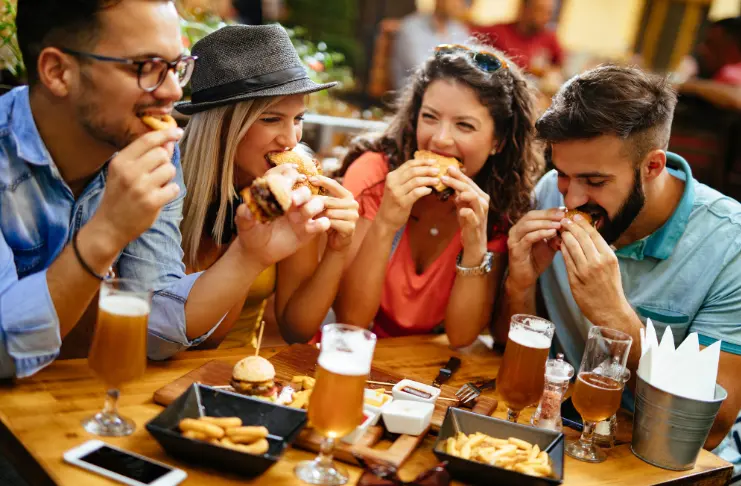
On paper, both QSRs and FSRs serve food. But in practice? They’re built on two entirely different priorities.
A Quick Service Restaurant (QSR) is engineered for volume and velocity. The customer walks in (or taps in), places an order, and gets their food within minutes. There’s no waitstaff, no elaborate service protocol, and usually no need to even sit down. The entire model revolves around keeping things fast, affordable, and consistent, especially during peak hours.
Behind the scenes, QSR kitchens are more like assembly lines. Menus are tight. Recipes are standardized. Prep is mostly pre-done. Staff are trained to repeat the same process with precision. That’s what makes the format scalable. You can open ten new outlets and expect nearly identical results, assuming your systems are tight.
Now compare that to a Full-Service Restaurant (FSR).
Here, experience takes center stage. Guests are greeted, seated, served, and encouraged to linger. The food is typically made to order, customizations are welcome, and the menu often includes a wide range of dishes. As a result, FSR kitchens need more skilled labor, more time per dish, and more operational bandwidth to handle variability.
INDUSTRY INSIGHT
| Fast food is no longer a once-in-a-while indulgence for Indians. A study shows that a staggering 94% of men and 96% of women eat out or order in at least once a week, reflecting the massive cultural shift toward speed and convenience. This rising demand directly fuels the scalability and relevance of QSRs over traditional FSR formats. |
7 Key Characteristics of a Quick Service Restaurant in India

If you were to map QSR on a Venn diagram, it would sit at the intersection of precision, predictability, and performance at scale.
Yes, QSRs may serve everything from tacos to tandoori wraps, but under the hood, they operate on a shared set of non-negotiables, like:
1. Speed of Service
In QSRs, time is the product. Most orders are expected to be fulfilled in under 7–10 minutes (sometimes even faster), no matter how complex the item is. How is this achieved? Take McDonald’s, for example. They pre-grill patties in advance and hold them in heat-maintained conditions, ready to be served. Domino’s promises delivery within 30 minutes and has thus designed its kitchen, inventory, and routing accordingly.
2. Minimal Table Service
Reducing human touchpoints helps them lower labor costs, minimize delays, and keep throughput high, ensuring they can serve delicious food, especially during mealtime rushes.
Most QSR restaurants in India operate on a self-service model:
- Order via a counter or kiosk
- Wait for a token or buzzer
- Pick up and move
There’s rarely a dedicated server or host. This keeps the labor headcount low and the order-to-table time short.
Even dine-in-heavy brands like Haldiram’s Express or Saravana Bhavan format their outlets around rapid movement: walk in, order, eat, exit.
3. Menus are Tight, Standardized, and High-Margin
QSRs mainly focus on a tight, high-margin menu of prepared foods that’s easy to produce and train staff on. The goal is to reduce inventory bloat, avoid complexity in kitchen workflows, and boost cross-utilization of ingredients.
You’ll also find modularity here—one base item is used across five variations, which simplifies operations while giving customers perceived variety.
4. Rigorous Cost Control
Margins in QSRs are slim. That’s why everything is engineered for cost discipline. Labor is kept lean through role simplification and automation. Store footprints are optimized to reduce rent. High-volume ordering allows for better procurement rates. The result? Aggressive pricing strategies that attract volume without killing margins.
5. Technology-First Mindset
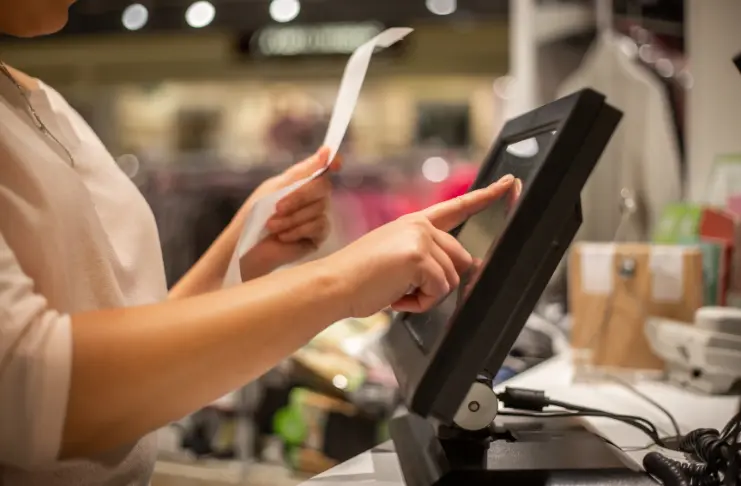
Today, QSRs are powered as much by software as by chefs. Cloud-based POS systems, kitchen display systems (KDS), integrated CRM tools, online ordering platforms, and delivery aggregator APIs all form the tech stack that keeps things moving smoothly.
Some brands even integrate AI-based demand forecasting to better manage prep schedules and reduce food waste.
This tech stack provides operators with better visibility into operations, cleaner data, and easier experimentation across locations.
6. Off-premise as Default
Unlike traditional restaurants, QSRs don’t offer dining spaces. Many of them have been, in fact, optimized for delivery and takeaway from day one. This off-premise-first approach allows them to work well in high-footfall but compact spaces like metro stations, airport terminals, food courts, and even cloud kitchens.
The upside? Lower real estate costs, faster table turns, and better alignment with India’s food delivery economy.
7. Franchise-Friendly Architecture
QSRs are built to be cloned. Their SOPs, brand assets, tech systems, and supply chains can be easily handed off and replicated, which makes them extremely investor-friendly. Brands like Wow! Momo, Rolls Mania, and Biryani Blues have all scaled using this blueprint.
Why are Quick Service Restaurants Booming in India?
The surge in QSR restaurants in India is the result of structural shifts across consumer behavior, infrastructure, and investment patterns. Here are the real drivers behind the sector’s explosive growth.
1. Urbanization and Nuclear Households
India’s urban population is expected to hit 675 million by 2035. With more people moving into cities, lifestyles are getting busier, and cooking time is shrinking. Nuclear families and young professionals now form the core QSR consumer base, favoring convenience over tradition. Eating out, or ordering in, has become more of a necessity than a luxury.
2. Rise of Delivery Aggregators
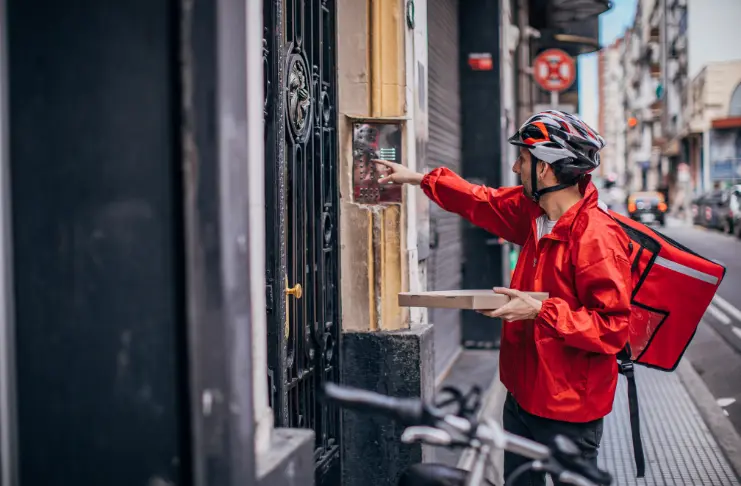
Swiggy, Zomato, and Dunzo have transformed access. QSRs now reach customers within 20 to 30 minutes without spending a rupee on storefront marketing. Delivery-first formats have allowed brands to scale even without physical seating.
For operators, this means lower CapEx (Capital Expenditure) and faster return on investment, ultimately attracting more customers.
3. Increased Disposable Income
With India’s GDP per capita rising steadily, consumers have more to spend on eating out. A meal at a QSR costs less than full-service dining but feels premium compared to home-cooked alternatives. That’s the sweet spot.
Value-driven menu items at scale are converting occasional indulgence into weekly habits.
4. Youth-Driven Market
Over 50% of India’s population is under 30. This is a generation raised on smartphones, streaming apps, and instant gratification. QSRs deliver the same velocity in food—quick, casual, and on-demand—and thus appeal to them.
5. Standardization Equals Trust
Unlike a local dhaba, a QSR ensures that the same burger or biryani tastes exactly the same in Pune as it does in Patna. This consistency is key for brand loyalty. As Indians become more brand-conscious, they tend to prefer predictable food experiences, especially while traveling at malls, airports, or offices.
6. Real Estate Shift Toward Smaller Footprints
Rising rental costs in metros are forcing brands to think lean. QSRs operate profitably even in 300–500 sq. ft. setups when paired with high-foot-traffic locations like transit hubs, college areas, and commercial clusters. The model favors compact, high-turnover formats.
7. Franchise-Led Growth
Most successful QSRs have one thing in common: a franchisable model. This has unlocked capital from entrepreneurs across Tier 1, 2, and 3 cities. As SOPs, tech systems, and supply chains improve, more investors are willing to get in.
8. Policy and Investment Support
India’s food service industry has been attracting serious interest from private equity and venture capital players. Simultaneously, government initiatives like Startup India and digitization drives have made it easier to formalize operations, secure funding, and scale rapidly.
9. Pandemic-Era Habit
The COVID-19 period trained Indian consumers to rely on delivery, value hygiene, and trust branded players. Even post-pandemic, those habits haven’t reversed. In fact, they’ve deepened the penetration of QSRs in Tier 2 and 3 cities, where earlier, only unorganized players dominated.
Top 10 QSR Brands in India
India’s quick service restaurant market is an ecosystem in itself. While global brands brought in the format, local players adapted it to Indian preferences with astonishing agility. Both segments now coexist, and each brings valuable lessons in scale, operations, and consumer engagement.
Global QSR Restaurants in India
1. McDonald’s India

Operated by Westlife Foodworld in the South and West and Connaught Plaza Restaurants in the North and East, McDonald’s has over 350 outlets nationwide. The brand tailors its menu to local preferences, offering items like the McAloo Tikki and Chicken Maharaja Mac. The key to its success is in its deep localization, tight supply chain, and high investment in technology-driven operations.
2. KFC
KFC India has adapted brilliantly to the Indian market by offering veg options and spice-forward variants of its global staples. With over 600 stores, it runs on a franchise-led model under Yum! Brands. KFC focuses heavily on delivery, loyalty programs, and low-contact ordering through kiosks and apps, making it a clear winner in the tech-enabled QSR space.
3. Domino’s Pizza
Domino’s is India’s largest QSR brand by store count. Operated by Jubilant FoodWorks, it has more than 1,800 outlets and dominates the food delivery segment. Its 30-minute delivery promise is backed by serious backend optimization from store placement to inventory stocking and kitchen design.
4. Subway
Subway has over 500 outlets in India and follows a master franchise model. Its core proposition is fresh, made-to-order sandwiches, which set it apart from fully pre-cooked formats. Despite slower growth in recent years, its menu flexibility still attracts a niche urban customer base looking for healthier fast-food alternatives.
5. Burger King India
Relatively newer, Burger King has scaled rapidly to over 400 outlets. The brand positioned itself as a strong challenger to McDonald’s by offering larger portions at competitive prices. Its aggressive pricing, value meals, and strong marketing campaigns have fueled its growth.
Leading Indian QSR Brands
1. Wow! Momo
Founded in 2008, Wow! Momo is a classic case of Indian QSR done right. With more than 700 outlets across formats, it has built a scalable system around a niche product: momos. The brand now operates three verticals: Wow! Momo, Wow! China, and Wow! Chicken, each tailored to quick, affordable food.
2. Haldiram’s QSR Formats
Haldiram’s, traditionally known for its snacks and sweets, has made its way into the QSR sector with express outlets and food courts. They operate on a semi-self-service model and offer ready-to-eat thalis, snacks, and combo meals. Its supply chain strength and brand recall make it a dominant player in high-footfall zones.
3. Biryani Blues
Biryani Blues has successfully productized biryani into a QSR format. The brand offers single-serve portions, combo meals, and express delivery while preserving regional authenticity. With over 50 outlets, it is one of the few brands that has cracked the biryani-at-scale model in India.
4. Rolls Mania
With more than 150 outlets, Rolls Mania has built a franchise-led growth model around one core product: Kathi rolls. Its operations are lean, the menu is modular, and the format is location-flexible, making it ideal for Tier 2 and Tier 3 expansion.
5. Goli Vada Pav
Goli transformed humble Mumbai street food into a nationally scalable QSR brand. It operates largely through franchising and maintains tight quality control via central commissaries. With a presence in over 100 cities, Goli proves that regional food can be standardized at scale.
How to Start a Quick Service Restaurant in India: Step-by-Step Guide
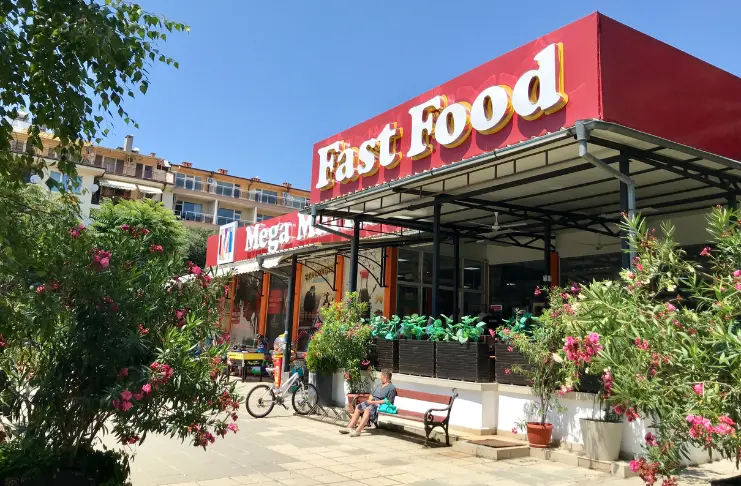
The QSR model may look simple from the outside, but behind the scenes, it demands precision and strategic decision-making. Here’s how to build it the right way.
Finalize Your Concept and Product Strategy
Don’t jump into operations before deciding on your concept. You must define:
- Your core product (e.g., rice bowls, burgers, momos, wraps)
- Positioning (value, premium, regional)
- Format (delivery-only, kiosk, dine-in hybrid)
Your menu and equipment will follow from this. For example, a momo-based QSR needs steamers and heating trays; a pizza QSR requires deck ovens and portion-controlled prep.
Pro tip: Validate your concept with a pilot. A single cloud kitchen or a food truck can help gather real-world data on menu performance and consumer response before scaling.
Choose the Right Location
For a physical QSR, location is everything. Look for:
- High foot traffic zones: malls, tech parks, campuses, metro stations
- Ground floor visibility with strong signage potential
- Minimum 300 sq. ft. area for counter-service + kitchen
If you’re launching a delivery-only service, study data from aggregators (Swiggy, Zomato, etc.) to find dense residential zones with high order volumes and low existing competition.
Build an Optimized, Production-First Kitchen
Speed and consistency start here. Your kitchen layout should minimize movement and maximize batch prep. Place cold storage, prep counters, and cooking stations in a linear flow.
If you’re doing volume, invest in high-throughput equipment like combi-ovens, dough sheeters, fryers, or steamers, depending on your core product.
But don’t overbuild on Day 1. Modularize your equipment purchases so you can scale capacity with demand.
Structure Your Menu for Efficiency

One of the biggest mistakes new QSRs make is offering too much. Keep your menu sharp and production-friendly with 10 to 12 items that deliver 80% of your sales.
Choose items that:
- Share ingredients for cross-utilization
- Can be prepped ahead or assembled quickly
- Travel well if you’re delivery-focused
A good QSR menu looks limited at first glance but offers enough variety through customization. This gives customers a sense of choice while keeping your kitchen lean.
Get the Right Licenses in Place
You’ll need:
- FSSAI license (mandatory)
- Shop and Establishment Act registration
- Trade license from your local municipal body
- GST registration (especially if selling online)
- Fire NOC if dine-in is offered
Most QSRs also register with aggregators, and for that, basic hygiene audits are required. Keep your documentation updated from Day 1.
Hire Lean, Train Deep
You don’t need a large team. What you need is a trained one.
- Kitchen staff: 2–3 with basic culinary and hygiene training
- FOH staff (if dine-in): 1–2 for counter service
- Delivery executives: [optional] if working with third-party apps
Use video SOPs, daily briefings, and live demos to maintain consistency. Your staff should be able to reproduce any item with zero deviation.
Invest in a Restaurant Tech Stack
No QSR today runs without tech. You’ll at least need:
- Cloud POS system with billing and inventory tracking
- Kitchen Display System (KDS) for order management
- CRM for repeat business (loyalty, feedback loops)
- Delivery aggregator integrations (Swiggy, Zomato, Dunzo)
As you scale, add tools like automated inventory tracking, feedback loops, and AI-driven demand forecasting. These offer two crucial things: data visibility and operational control—both essential for scaling.
Launch Strong with Targeted Marketing
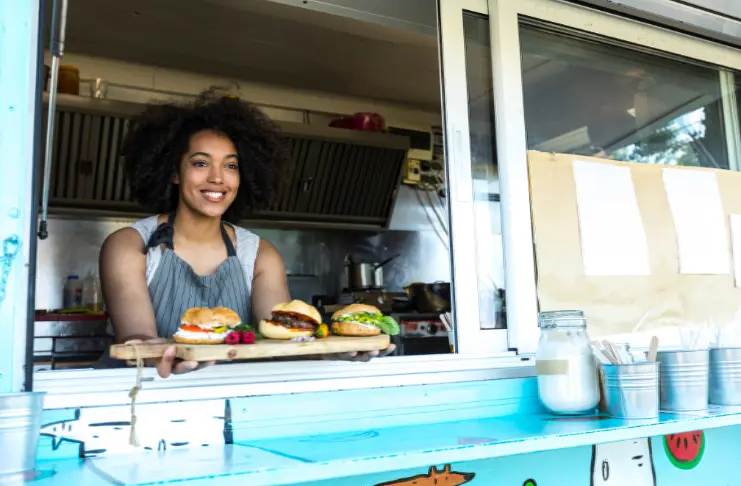
No matter how good your food is, first-time discovery drives initial traction.
Go hyperlocal. List your QSR on delivery platforms, push sampling campaigns with micro-influencers, and run Google Ads targeting your immediate pin codes.
Use opening offers to attract trial if you’re in a footfall-heavy area. The goal is simple: convert locals into loyalists.
Your first 1,000 customers will build or break your reputation—serve them well, collect feedback, and iterate quickly.
Monitor, Tweak, Scale
Track metrics that matter:
- Average order value (AOV)
- Kitchen throughput time
- Repeat order rate
- Cost per order (CPO)
- Daily break-even point
Refine your menu based on what sells. Add automation where possible. Expand only when your unit economics are healthy and repeatable.
Conclusion
The Indian QSR landscape highlights a shift in how this country eats, earns, and experiences food. Urban migration, smaller households, digital-first lifestyles, and rising aspirations have all come together to create fertile ground for fast, scalable food businesses.
But here’s the thing: just because the market is growing doesn’t mean every QSR will succeed. Here, you compete not only on flavor but also on time, tech, cost control, and brand consistency. So, think wisely before getting in.
Frequently Asked Questions
1. How many QSR restaurants are there in India?
While the exact number of QSR outlets in India isn’t readily available, the market is substantial and growing. As of recent reports, Café Coffee Day had 469 outlets, and Starbucks operated 421 cafes. Given numerous other chains like McDonald’s, KFC, Domino’s, and various regional brands, the total number of QSR establishments in India is likely in the thousands.
2. What is a QSR in India?
A Quick Service Restaurant refers to an establishment that offers food with minimal preparation time and limited table service. Examples include fast-food chains like McDonald’s, KFC, and Domino’s.
3. Which is the No. 1 restaurant in India?
According to the World Culinary Awards, The Bombay Canteen was named India’s Best Restaurant in 2024.
4. Which is the best QSR stock in India?
Some of the prominent QSR stocks in India include:
Jubilant FoodWorks: Master franchisee for Domino’s Pizza and Dunkin’ Donuts in India.
Devyani International: Operates brands like KFC, Pizza Hut, and Costa Coffee in India.
Westlife Foodworld: Master franchisee for McDonald’s in West and South India.
Sapphire Foods India: Operates KFC and Pizza Hut outlets in India.
Restaurant Brands Asia: Manages Burger King in India.
Investors should conduct thorough research or consult financial advisors before making investment decisions.
5. What restaurants are owned by QSR?
“QSR” stands for Quick Service Restaurant and refers to a category rather than ownership. However, companies like Jubilant FoodWorks own and operate QSR brands such as Domino’s Pizza and Dunkin’ Donuts in India.
6. What is the trend in QSR in India?
The QSR market in India is experiencing significant growth, driven by factors like urbanization, changing consumer lifestyles, and an increasing preference for convenience. As of 2025, it’s valued at USD 27.80 billion, and projections show it will grow further at a CAGR of 9.36% through 2030.
7. What does QSR stand for in restaurants?
QSR stands for Quick Service Restaurant, commonly known as a fast-food restaurant. These establishments prioritize speed of service and offer limited table service.
8. What is an example of a QSR?
Examples of QSRs include McDonald’s, KFC, Subway, and Domino’s Pizza. These establishments offer quick service and have a standardized menu.
9. What makes a restaurant a QSR?
A restaurant is classified as a QSR if it focuses on quick service, has a standardized menu, offers limited table service, and emphasizes speed and efficiency in food preparation and delivery.
10. What is the difference between fast food and QSR?
The terms “fast food” and “Quick Service Restaurant (QSR)” are often used interchangeably. Both refer to establishments that prioritize speed of service and offer limited table service. However, QSR is the industry term commonly used to describe these types of restaurants.
11. What is a quick service restaurant example?
An example of a quick service restaurant is McDonald’s, which is known for its fast service and standardized menu.
12. What are examples of QSR?
Examples of QSRs include McDonald’s, KFC, Subway, Domino’s Pizza, and Burger King. These establishments focus on quick service and have standardized menus.
13. What is an example of a quick casual restaurant?
An example of a fast-casual restaurant is Panera Bread, which combines the convenience of quick service with higher-quality ingredients and a more inviting dining atmosphere.
14. Is Chick-fil-A a quick service restaurant?
Yes, Chick-fil-A is a quick-service restaurant specializing in chicken sandwiches and is known for its fast service.





